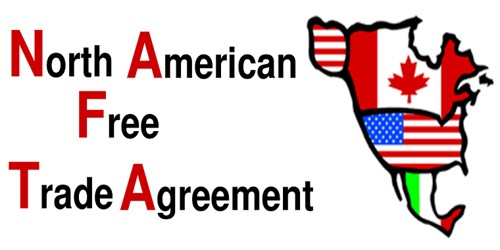Impact of North American Free Trade Agreement (NAFTA)
North American Free Trade Agreement (NAFTA) which includes Canada, Mexico, and the United States of America went into effect in 1994; The United States of America and Canada historically have had various forms of mutual cooperation. That makes NAFTA the world’s largest free trade agreement.
There are pros and cons to any trade agreement, and NAFTA is not an exceptional. It is obvious that trade and investment in NAFTA base increase significantly since the agreement was signed in 2004. The trading relationship between the U.S.A and Canada is the largest bilateral flow of good Services and income in the world, reaching nearly $ 450 billion.
NAFTA increased the competitiveness of the these three countries in the global marketplace. It allows them to better compete with China and the European Union. In 2007, the EU replaced the United States as the world’s largest economy. In 2015, China replaced both.
Due to the low wages in Mexico, U.S.A companies invested significantly in Mexico. It is complicated to determine wage rates. However, The Bureau of Labor Statistics reported that the hourly compensation costs in U.S dollars for production Workers in manufacturing in 2003 was $ 2.48 for Mexican workers compared with $ 21.97 for U.S.A. workers and $ 19.28 for Canadian workers.
The investment and employment picture are complicated. One concern for U.S.A workers when the agreement was being wages and lax environmental standard. As noted, above, wages are significantly lower than wages in many of the industrialized countries of Asia.
A major challenge to NAFTA is immigration. As trade in agriculture increased with the advent of NAFTA it is estimated that 1.3 million from jobs disappeared in Mexico due to competition from the U.S.A. Many of these farmers ended up as illegal immigrants in the U.S.A. Working in the agricultural and other sectors. Sending home more money in wire transfers than Mexico received in foreign direct investment in 2003.














